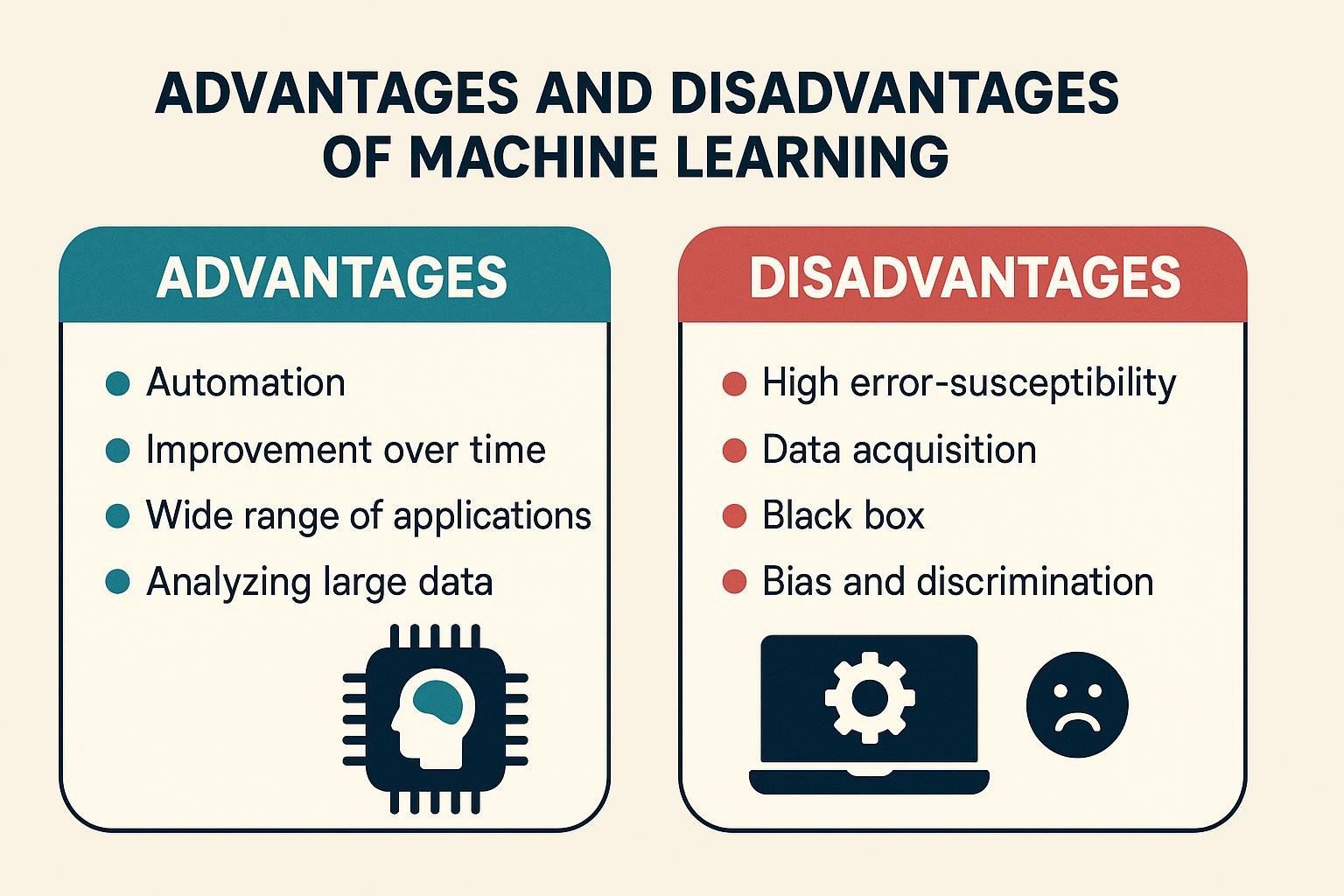Machine learning (ML) is one of the most transformative technologies of our time. From voice assistants and recommendation engines to fraud detection and self-driving cars, machine learning is powering innovations across industries. However, like any technology, it comes with both benefits and limitations.
In this blog, we’ll explore the advantages and disadvantages of machine learning, helping you understand where it shines and where it falls short.
What is Machine Learning?
Machine learning is a branch of artificial intelligence (AI) that enables systems to learn from data and make decisions without being explicitly programmed. By identifying patterns and trends in data, machine learning algorithms can perform tasks such as classification, prediction, and optimization.
Advantages of Machine Learning
Let’s begin with the advantages of machine learning that make it a powerful tool for businesses and individuals alike:
1. Automation of Tasks
One of the most significant benefits of machine learning is its ability to automate repetitive and time-consuming tasks. From email filtering to customer service chatbots, ML reduces the need for manual intervention.
2. Continuous Improvement
Machine learning systems can improve over time as they are exposed to more data. This means that predictions and outputs become more accurate with usage, which leads to better decision-making.
3. Handling Complex Data
Machine learning excels in processing large volumes of complex and unstructured data (like images, videos, or text) that traditional systems struggle to handle.
4. Wide Range of Applications
ML can be used across various industries such as healthcare (disease prediction), finance (fraud detection), retail (customer segmentation), and transportation (route optimization).
5. Personalization
ML algorithms help create personalized experiences such as product recommendations on e-commerce platforms or content suggestions on streaming services—based on user behavior and preferences.
Disadvantages of Machine Learning
Despite its numerous benefits, there are also disadvantages of machine learning that organizations must consider:
1. Data Dependency
Machine learning models heavily rely on large amounts of high-quality data. Poor, biased, or incomplete data can lead to inaccurate predictions and faulty outcomes.
2. High Computational Cost
Training sophisticated ML models often requires significant computational resources, which can be expensive in terms of both hardware and energy consumption.
3. Lack of Transparency
Many ML models, especially deep learning networks, are considered “black boxes” because it’s difficult to understand how they arrive at certain decisions or predictions.
4. Overfitting and Underfitting
Models can sometimes perform too well on training data (overfitting) or fail to capture the patterns in data (underfitting), leading to poor performance in real-world scenarios.
5. Security and Privacy Risks
Machine learning systems can be vulnerable to cyberattacks, adversarial inputs, and data breaches. Ensuring data privacy is a major challenge, especially when handling sensitive user information.
Conclusion
Understanding the advantages and disadvantages of machine learning is crucial for businesses and developers who want to implement it effectively. While machine learning offers powerful capabilities and real-time insights, it’s essential to manage its limitations, especially in terms of data quality, transparency, and ethical concerns.
By striking the right balance, machine learning can serve as a game-changer across industries, driving innovation, boosting productivity, and unlocking new opportunities.
